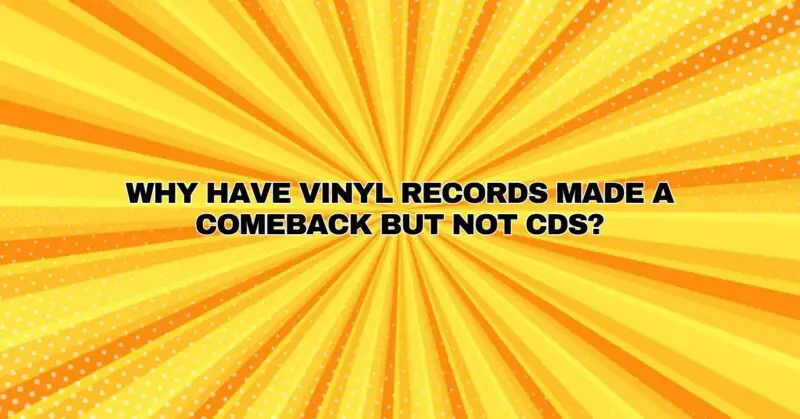In an age dominated by digital technology and streaming services, the resurgence of vinyl records has surprised many music enthusiasts and industry experts. Vinyl’s revival, marked by increasing sales and a dedicated community of collectors, stands in stark contrast to the gradual decline of Compact Discs (CDs). In this comprehensive article, we will explore the factors contributing to the resurgence of vinyl records and the decline of CDs, shedding light on the changing landscape of physical music formats in the digital age.
1. Analog Nostalgia and Tangibility
One of the key drivers behind vinyl’s resurgence is nostalgia. Vinyl records evoke a sense of nostalgia and nostalgia-driven interest in analog technology. For older generations, vinyl records represent a return to the heyday of their youth, a time when physical albums were cherished possessions. For younger generations, vinyl offers a tangible connection to a bygone era, creating a unique and tangible experience in an increasingly digital world.
2. Collector’s Appeal
Vinyl records have a collector’s appeal that CDs lack. Collectors value vinyl for its larger album artwork, unique pressings, and limited-edition releases. The physicality of records, along with their distinctive packaging, makes them highly collectible. In contrast, CDs are typically seen as more utilitarian, with standardized jewel cases and smaller artwork.
3. Audiophile Experience
Audiophiles often prefer vinyl for its perceived superior sound quality. Vinyl records reproduce sound through analog grooves, capturing subtle nuances and warmth that some audiophiles find lacking in digital formats. The audiophile community’s dedication to high-quality turntables, cartridges, and amplifiers has further fueled the resurgence of vinyl.
4. Aesthetic Appeal
Vinyl records have a unique aesthetic appeal that has captured the imagination of artists, designers, and musicians. The tactile experience of handling vinyl, reading liner notes, and exploring album artwork provides a more immersive experience than clicking through digital files. Many artists and bands release vinyl versions of their albums to engage with their audience on a deeper level.
5. Limited Pressings and Special Editions
Vinyl records often feature limited pressings and special editions, creating a sense of exclusivity and urgency among collectors. Record Store Day, an annual event celebrating independent record stores, has become a driving force behind vinyl’s resurgence, with artists releasing exclusive vinyl editions to celebrate the occasion.
6. Counter-Culture and Anti-Mainstream Appeal
Vinyl’s resurgence also carries a counter-cultural and anti-mainstream appeal. In a world dominated by digital streaming giants, vinyl represents a rebellion against the convenience-driven, mass-produced nature of digital music. Vinyl collectors value the effort and intentionality required to curate and maintain a physical collection.
7. Decline of CDs and Digital Dominance
While vinyl records have experienced a resurgence, CDs have faced a decline in popularity. This decline can be attributed to several factors:
- Digital Dominance: The convenience and ubiquity of digital music downloads and streaming services have made CDs less attractive to consumers.
- Physical Space: CDs take up physical space, which can be a limiting factor for people living in smaller spaces. In contrast, digital music collections are stored electronically.
- Perceived Sound Quality: While vinyl has gained a reputation for its perceived superior sound quality, some listeners perceive CDs as sterile or too clinical, contributing to their decline in popularity.
- Environmental Concerns: CDs are made from polycarbonate plastic, which has raised environmental concerns. Many consumers are now more conscious of the environmental impact of physical media.
Conclusion
The resurgence of vinyl records and the decline of CDs represent a complex interplay of nostalgia, collector culture, audiophile preferences, and changing consumer habits. Vinyl’s unique appeal, both as a medium for music and as a collectible artifact, has given it a new lease on life in the digital age.
While CDs continue to have a presence in the music industry, especially for their durability and ease of use, they no longer dominate the market as they once did. The vinyl resurgence, driven by a love for analog warmth, tangible experiences, and collector’s culture, showcases the enduring power of physical music formats in an increasingly digital world.


